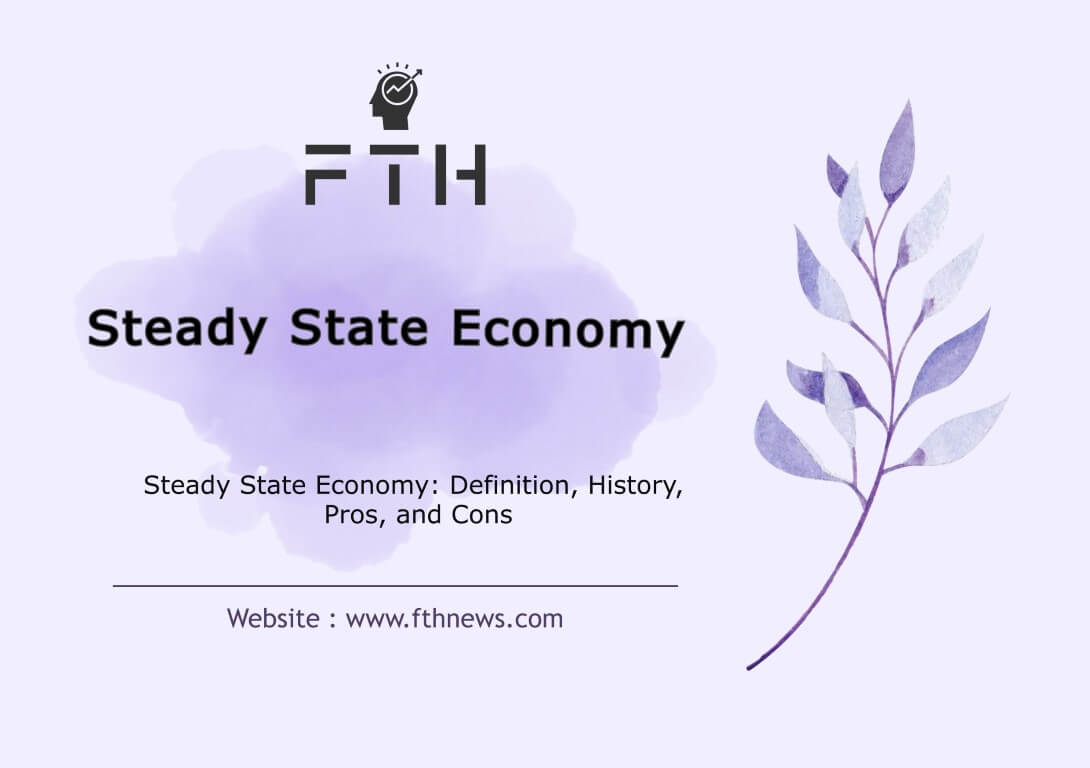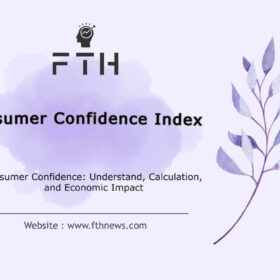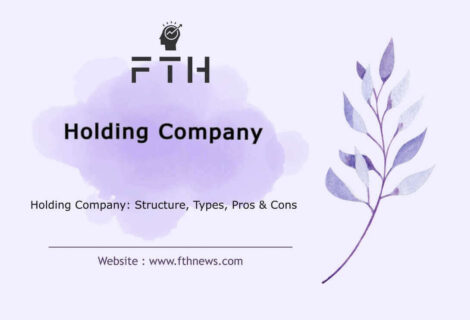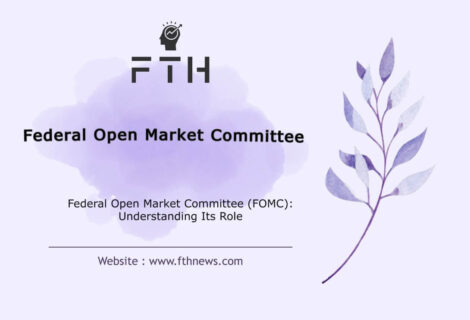
Steady State Economy: Definition, History, Goals, Examples, Pros, and Cons
Embark on a unique journey into the world of economic balance and ecological consciousness. This exploration introduces the steady-state economy—a distinctive paradigm aligning growth with environmental harmony. Often termed a static economy, it not only champions ethical wealth distribution but also provides a roadmap for a future where sustainability and equity coalesce in a singular symphony.
What Is a Steady-State Economy?
The concept of a sustainable economy is more relevant today than ever before. At its core, a steady-state economy seeks equilibrium between production growth and population expansion within a society. Often referred to as a static economy, this model is meticulously crafted to align economic growth with the delicate environmental balance of our habitat.
This distinctive approach to economic sustainability goes beyond conventional notions of unbridled growth. It is a conscious effort to utilize a society’s natural resources judiciously and efficiently. Moreover, the steady-state economy strives for the just and equitable distribution of wealth generated through the responsible development of these resources.
In this exploration, our aim is to provide you with a comprehensive introduction to the unique and impactful concept of a sustainable economy. Let’s delve into the principles that underpin the steady-state economy, shedding light on its potential to shape a fair and environmentally conscious future.
History of Steady-State Economy
The concept of a steady-state economy has roots in various economic and environmental philosophies. While it doesn’t have a singular historical origin, key ideas contributing to its development can be traced throughout history.
Classical Economic Thought:
Elements of the steady-state economy concept can be found in the works of classical economists such as John Stuart Mill and John Maynard Keynes. Mill, for instance, expressed concerns about the long-term sustainability of economic growth.
Ecological Economics Emergence (late 20th century):
The term “steady-state economy” gained prominence in the late 20th century with the rise of ecological economics. Pioneering figures like Herman Daly, a former World Bank economist, played a crucial role in developing and promoting the concept. Daly’s work, particularly his book “Steady-State Economics” published in 1977, provided a foundational framework for understanding and advocating for a steady-state economic model.
Limits to Growth (1972):
The publication of the report “The Limits to Growth” by the Club of Rome in 1972 also contributed to the intellectual landscape surrounding steady-state economics. The report highlighted the finite nature of resources and the potential consequences of continuous growth.
Gross National Happiness (GNH) in Bhutan (1970s):
Bhutan’s adoption of Gross National Happiness as a holistic development indicator rather than relying solely on Gross Domestic Product (GDP) is often cited as a practical application of steady-state principles. Bhutan’s commitment to sustainability, cultural preservation, and community well-being aligns with the ideals of a steady-state economy.
Modern Environmental Movements:
The growing awareness of environmental issues and sustainability in the late 20th and early 21st centuries has fueled interest in economic models that prioritize ecological health. Concepts such as the ecological footprint and carbon neutrality align with steady-state principles.
While the term “steady-state economy” might be a relatively recent addition to economic discourse, its foundations are deeply rooted in concerns about the long-term viability of perpetual growth. The historical development of this concept reflects a growing recognition of the need to balance economic development with ecological limits for the well-being of both current and future generations.
the Steady-State Economy: A Quest for Balance
In essence, a steady-state economy is a vision of equilibrium, a state where growth levels off, achieving a delicate balance and relative stability. Unlike economies that experience cycles of expansion and contraction, a steady-state economy aspires to maintain a harmonious equilibrium over time.
Environmental economists, staunch advocates of the steady-state economy, argue that our planet cannot sustain the rapid, unchecked growth of production and wealth. They posit that an expanding population leads to decreased wages, triggering the depletion of natural resources, which are already in decline.
Within the realm of sustainable development, economic theorists propose a shift towards self-conservation. They caution against solely relying on economic tools in decision-making, emphasizing the critical role of environmental factors such as biodiversity in maintaining ecosystem balance. Striking a balance is paramount, as the laws governing environmental support are often the exception rather than the rule.
In navigating the intersection of economics and sustainability, the concept of market failure looms large. While achieving sustainable development requires economic considerations, solely relying on economic principles may lead to catastrophic outcomes. The integration of these two realms necessitates a trade-off logic to make decisions, recognizing that some exchanges may appear imbalanced initially but contribute to long-term equilibrium.
The success stories of countries embracing this approach—be it in tourism, agriculture, culture, or industry—underscore the viability of this trade-off logic. What may seem economically unprofitable initially often reveals itself as a wise investment with sustainable dividends in the years that follow.
Factors Shaping a Steady-State Economy: A Comprehensive Outlook
In the pursuit of a steady-state economy, certain factors play pivotal roles in establishing a stable and sustainable framework. Key elements encompass:
Institutional Evolution: A fundamental change in existing institutions is imperative for a steady-state economy. The ability to adapt and embrace innovative models is central to achieving economic stability.
Human Capital Focus: Prioritizing human capital, especially the empowerment of women and the younger generation, is critical. Investments in education, skills development, and gender equality contribute significantly to sustainable growth.
Civil Society Organizations: Social civil organizations are instrumental in promoting development within a steady-state economy. Their involvement fosters community-driven initiatives, ensuring inclusivity and addressing specific societal needs.
Human Rights Advocacy: Upholding human rights principles is integral to a steady-state economy. Prioritizing dignity, equality, and fair treatment contributes to the overall well-being of communities.
Cultural Integration: Successful steady-state development integrates with the social and cultural fabric of a community. Respecting and understanding local customs ensures that development initiatives are relevant and embraced.
Sustainability-Development Nexus: Recognizing the intrinsic link between sustainability and development is paramount. Balancing economic progress with environmental responsibility ensures a holistic and enduring approach.
Goals of a Steady-State Economy: Core Tenets
Within the steady-state economy framework, the goals align with a vision of interconnected and people-centric development, emphasizing:
Environmental Harmony: Acknowledging the intricate relationship between economic activities and the environment, with a focus on practices that preserve and regenerate natural resources.
People-Centric Approach: Placing people at the forefront, emphasizing their active role in achieving sustainable development. Empowering individuals and communities ensures a collective and inclusive approach.
Meeting Fundamental Needs: Prioritizing societal well-being by addressing fundamental needs ensures a sustainable and equitable future. Access to necessities like food, water, and shelter is central to these efforts.
Internal Development Within Constraints: Emphasizing internal development while respecting ecological limits acknowledges the finite nature of resources. Striving for progress within sustainable boundaries ensures long-term stability.
Support for the Vulnerable: A crucial goal is the provision of assistance to the poor and vulnerable. Reducing inequalities and enhancing social support structures contribute to a more resilient and just society.
Example of a Steady-State Economy
While the concept of a steady-state economy is more theoretical than widely implemented, certain regions or communities exhibit characteristics aligning with its principles. One noteworthy example is Bhutan, a small Himalayan kingdom, often cited for its unique approach to development.
Bhutan’s commitment to Gross National Happiness (GNH) rather than Gross Domestic Product (GDP) reflects a distinct focus on holistic well-being. This aligns with the principles of a steady-state economy, emphasizing the importance of societal welfare over unbridled economic growth. Bhutan’s development policies prioritize environmental conservation, cultural preservation, and equitable social progress.
The country has implemented initiatives such as carbon-neutral policies, emphasizing sustainable practices to maintain environmental equilibrium. Additionally, Bhutan’s emphasis on community well-being and cultural values resonates with the idea of integrating development with social and cultural structures, a key principle of the steady-state economy.
While not a perfect example of a fully realized steady-state economy, Bhutan’s unique development approach provides insights into how a nation can prioritize sustainable and balanced growth over sheer economic expansion. It serves as an inspiration for those exploring alternative economic models that harmonize with environmental and societal needs.
Advantages of a Steady-State Economy:
Environmental Sustainability: A key benefit is the emphasis on sustainable resource use. By balancing production with environmental capacity, a steady-state economy aims to prevent overexploitation and depletion of natural resources, fostering long-term environmental health.
Reduced Environmental Impact: The intentional focus on equilibrium minimizes the ecological footprint associated with rapid and unchecked economic growth. This can lead to a more resilient and ecologically balanced environment.
Social Equity: Wealth distribution is a priority in a steady-state economy, aiming for fair and just allocation of resources. This can contribute to reduced income inequality, promoting social cohesion and stability.
Stability and Predictability: The steady-state model aims for economic stability, reducing the likelihood of boom-and-bust cycles. This predictability can be advantageous for long-term planning and societal well-being.
Quality of Life: With a focus on non-material aspects of well-being, such as health, education, and community, a steady-state economy seeks to enhance overall quality of life rather than relying solely on material wealth metrics.
Disadvantages of a Steady-State Economy:
Potential for Limited Innovation: Critics argue that a steady-state economy might discourage innovation and technological progress due to the emphasis on stability. Rapid technological advancements may be perceived as incompatible with the steady-state model.
Economic Stagnation: There’s a risk of economic stagnation if growth is intentionally curtailed. Critics argue that a lack of economic expansion could hinder job creation and income growth, leading to reduced opportunities for societal advancement.
Global Economic Integration Challenges: In a world where many economies are interconnected, the implementation of a steady-state model in one region might face challenges due to global economic interdependence and competition.
Transition Challenges: Transitioning from a growth-oriented economy to a steady-state model could be challenging. Existing structures, policies, and mindsets may need significant adjustments, potentially causing short-term disruptions.
Balancing Priorities: Striking the right balance between environmental, social, and economic factors is complex. Determining optimal resource use and distribution strategies requires careful consideration and effective governance.
In summary, while a steady-state economy offers potential benefits in terms of sustainability and social equity, it also presents challenges related to innovation, global economic integration, and the transition from existing growth-oriented models. The feasibility of such an economic system depends on effective policy implementation and societal acceptance of a fundamentally different approach to economic development.
Steady-State Economy vs. Stagnant Economy
In the realm of economic models, the distinctions between a steady-state economy and a stagnant economy are subtle yet profound. Let’s delve into the key differentiators to understand how these two concepts shape our understanding of sustainable economic systems.
Steady-State Economy: Balancing Act for Sustainability
A steady-state economy is a dynamic yet stable paradigm that prioritizes equilibrium between production growth and population expansion. Often referred to as a static economy, it seeks to align economic progress with environmental sustainability. The focus is on judicious resource utilization, efficient wealth distribution, and the long-term well-being of both the society and the ecosystem. Unlike the relentless pursuit of growth seen in traditional models, a steady-state economy aims for a harmonious coexistence where stability does not imply stagnation but rather a thoughtful and balanced progression.
Stagnant Economy: A Perpetual Standstill
In contrast, a stagnant economy is characterized by a prolonged standstill or lack of growth. It represents an economic condition where production levels, employment rates, and overall economic activity remain static or decline over an extended period. Stagnation often arises from various factors such as economic downturns, political instability, or a lack of innovation. Unlike the intentional balance sought in a steady-state economy, stagnation is an undesirable state associated with economic inefficiency and reduced opportunities for societal advancement.
Key Takeaways: Striking the Right Balance
While both concepts imply a form of stability, the critical difference lies in the intent and outcomes. A steady-state economy seeks a purposeful and sustainable balance between growth and environmental considerations. On the other hand, a stagnant economy implies a lack of progression, often resulting from external factors hindering economic vitality. Understanding these distinctions is crucial for crafting economic policies that not only foster stability but also promote resilience, innovation, and societal well-being.














